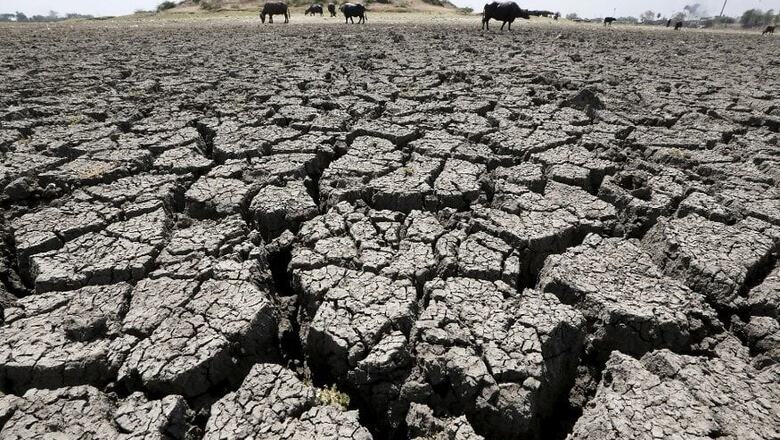
views
New Delhi: The United Nations Convention to Combat Desertification (UNCCD) launched a drought toolbox which uses a total of 15 to 30 different parameters to assess drought risk and vulnerability of a geographical region, a tool which will ease the process for global governments to declare a drought.
The toolbox, the UNCCD said, was designed to provide stakeholders with easy access to tools, case studies and other resources to support the design of their respective National Drought Policy with the aim to boost the resilience of people and ecosystems to drought.
Imbrahim Thiaw, executive secretary of the UNCCD, pointed out that 2019 had seen Delhi’s hottest summer, with temperatures reaching 48 degree Celsius, that Alaska had seen drought and Australia, for the first time in years, had to import grains after a drought. “Drought knows gender… in India’s most drought-prone areas, women spend 6-9 hours every day looking for water… and even that water might not be safe to drink,” he said.
The Bonn-based UN convention was tasked with developing the tool by countries during the 2013 UNCCD meeting at Ordos in China in 2017. Since then, it has been working with UN organisations such as the World Meteorological Organisation (WMO), Food and Agriculture Organisation (FAO), United Nations Environment Programme-DHI Centre for Water and Environment, the Global Water Partnership (GWP) and experts from the University of Nebraska’s National Drought Mitigation Centre to design the toolbox.
As the next step in the process, the UNCCD said that it would hold regional activities and workshops for different countries to work together. Daniel Tsegai, program officer, UNCCD added, "The regional activity will see countries in the region coming together, sharing their challenges and experiences."
The framework for the toolkit includes three key aspects. Firstly, the ‘Monitoring and Early Warning’ system, which provides “nearly real-time freely available data for drought monitoring to facilitate the generation of custom reports”. Secondly, it focuses on ‘Vulnerability and Risk Assessment’ which provides “information that helps define priorities and develop actions that prevent drought from escalating into a disaster and mitigate its impacts” and finally it provides ‘Risk Mitigation Measures’ which are tailored to the needs of the individual stakeholders.
While drought is a normal, recurrent feature of climate that occurs globally, it remains difficult to define or provide a universally accepted definition of drought due to its different characteristics and impacts across different areas, ranging from rainfall patterns to human responses.
In India, the Ministry of Agriculture is the nodal ministry in respect of monitoring and managing drought conditions and droughts are classified into meteorological droughts, hydrological droughts and agricultural droughts.
“A meteorological drought is classified based on rainfall deficiency w.r.t. long term average – 25% or less is normal, 26-50% is moderate and more than 50% is severe. While a hydrological drought is best defined as deficiencies in surface and sub-surface water supplies leading to a lack of water for normal and specific needs… Agricultural drought is identified by four consecutive weeks of meteorological drought, weekly rainfall is 50 mm from (May 15) to (October 15)… 6 such consecutive weeks rest of the year and crop planted is 80% in kharif season,” says the Jal Shakti Ministry website, while adding that the Indian Meteorological Department is responsible for providing early drought warning and forecasting.
An official of the West Bengal secretariat, who had earlier worked as an officer in the drought-prone areas of Bankura in Bengal told News18.com. "One of the key issues in declaring drought, is that the process is complicated...because there are so many variables. There are inevitably delays in declaring drought and that impact human lives."
Barron Joseph Orr, lead scientist at Science, Technology and Implementation Unit of UNCCD told News18 that they key was ‘drought vulnerability’ that look to look at “drought and land…together”.



















Comments
0 comment